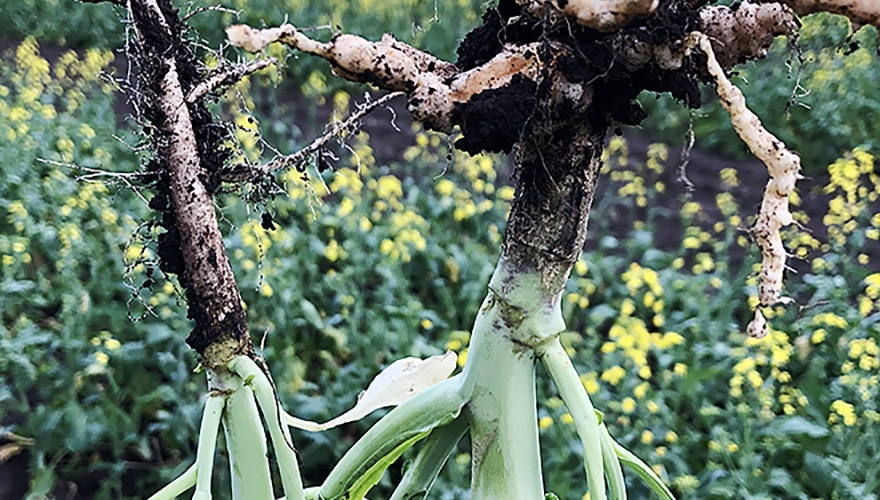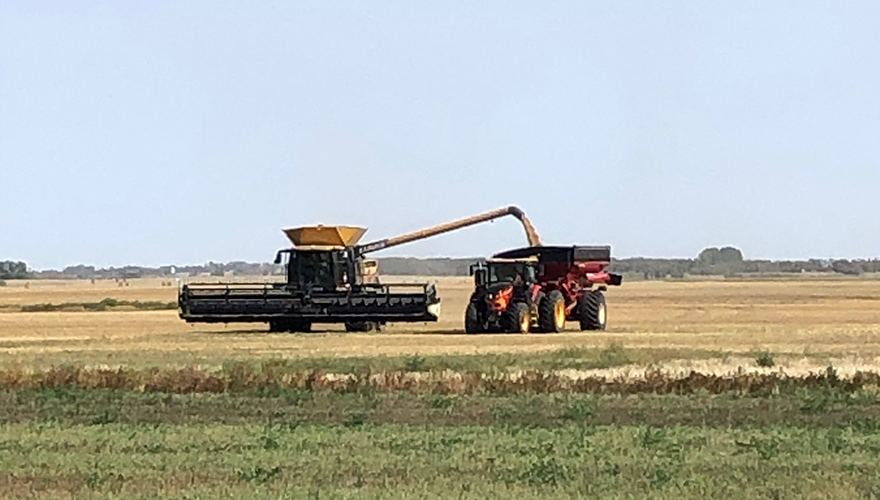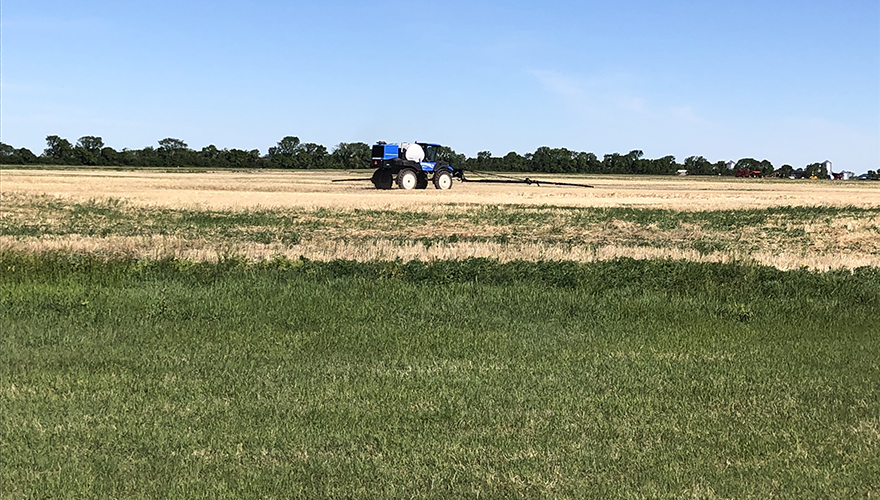Posted May 17, 2019
Maximizing Herbicide Performance
You have to admire the tenacity of weeds. Through droughts and excess moisture, weeds and other unwanted plants, such as volunteers, seem to beat the odds and reach for the sky.
Luckily for western Canadian growers, today’s herbicides continue to fight the good fight, beating back these unwanted pests as best they can. But like most things in life, herbicides can’t go it alone – they need help from various quarters to be the best they can be.
According to Twyla Jones, manager of agronomic services with Nutrien Ag Solutions, there are different considerations to take into account when applying herbicide products, such as water quality. Water, the primary carrier for herbicide applications, usually makes up over 99 per cent of the spray solution. Considering that, it should be no surprise that the chemistry of water added to the spray tank greatly impacts herbicide effectiveness.
“Different pesticides may perform differently depending on water quality,” Jones says, adding growers should test their water quality often. This can be as easy as using some indicator papers purchased locally or sending a sample away to a qualified testing lab.
Spray water quality information can be found through the federal and provincial departments of agriculture as well as many industry and producer groups. Chemical companies can often provide information and advice regarding the mix water as well.
Hard water, a common problem in rural areas, can have an effect on herbicide efficacy. Hard water is caused by high levels of cations (positively charged ions), primarily calcium, magnesium and sodium. Not all herbicides are affected by hard water but weak acid herbicides such as glyphosate (Roundup), paraquat (Gramoxone) and glufosinate (Liberty) can become tied up by hard water cations resulting in less than adequate weed control.
“Generally, we are concerned about glyphosate performance when it comes to hard water,” Jones notes. “Monsanto suggests that water hardness should be below 350 ppm for the low rate (1/2 L/ac equivalent) and below 700 ppm for higher rates.”
Water pH, too, plays an important role in the stability and efficacy of pesticides. A pesticide can begin alkaline hydrolysis, which is degradation or breakdown of the chemical, the moment it is introduced to the spray solution. Alkaline hydrolysis breaks chemical bonds holding pesticides together and can reduce the life of a pesticide. Weak-acid herbicides, such as glyphosate, 2,4-D and dicamba are most susceptible to alkaline hydrolysis from high water pH.
According to Jones, pH impacts herbicides because it is related to pesticide solubility, hard water antagonism and pesticide degradation. “In most cases, pH values between four and seven are considered acceptable. But it’s important to check your manufacturer recommendations as some pesticides perform better at lower or higher pH’s.”
Water volume is another factor to consider when spraying weeds. When weed pressure is high, or the crop canopy is dense, it’s imperative the spray reaches the target with enough droplets to cover the target and enough herbicide in those droplets to be taken up by the target.
“Increased water volume is the easiest way to get more droplets deeper into the canopy, and this can be particularly effective with decreased travel speeds,” Jones says.
Thinking about the uptake of the pesticide by the target, it is important to take environmental considerations into account. Most weeds need to be actively growing. Environmental events such as frost, hail, disease and drought/heat stress all reduce the metabolism of the weeds and reduce the efficacy of the pesticide, and this can also impact the crop’s ability to metabolize the pesticide. Jones suggests it is best to wait for better conditions. How long will depend on many factors including the target pest, the pesticide choice, as well as the degree of stress the target pest was under.
“Time of day can be very important, too, and it can depend on which pesticide you are using,” Jones says. “Generally, to avoid temperature inversions, growers should wait until there is some wind. Inversion conditions are often found right at dawn before the sun has had a chance to warm the ground; as well, these conditions can also happen right at sunset. Growers should watch for dust hanging in the air, this can be an indication that an inversion is in place.”
Some herbicides perform better under sunny conditions, and this is especially true for many contact herbicides. For this reason, growers may wait to spray until late morning or early afternoon, as long as the daytime temperatures are not too high.
“As a rule of thumb, most pesticides are sprayed best at temperatures below 27C. So, the heat of the day may not be the best time to apply, depending on daytime temperatures,” Jones notes.
Finding the right environmental conditions for optimal spray performance can be difficult. Jones says growers should work with their crop production advisor (CPA) or agronomist to understand what conditions should exist for peak performance of their pesticides.
“Growers may not be able to find the perfect conditions, but understanding which products perform best under which circumstances can help to reduce non-performance due to water quality or environmental factors.”
Find out about the role adjuvants play in herbicide performance.
FEATURED LINKS
NEWSLETTER
Want to stay caught up in all things agriculture? Sign up for the newsletter and get all the latest news straight to your inbox.
Adjuvants Play Role Herbicide Performance
Posted May 17, 2019




